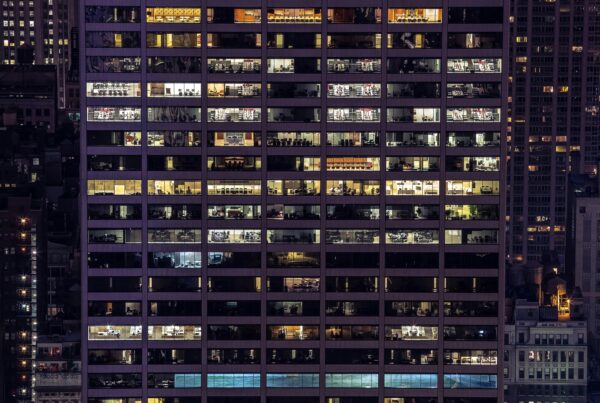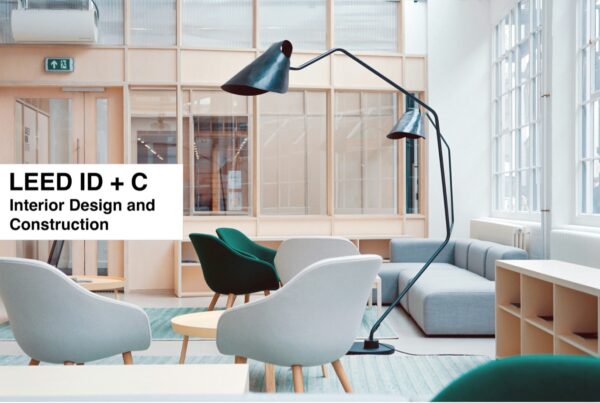Much has been said about sustainability in green building. But there’s another key component that needs to come to the forefront: resilience.
It’s the simple virtue of ensuring our buildings are able to gracefully withstand every possible challenge and risk applied to it. These challenges can be in the form of severe weather disturbances and natural disasters (such as earthquakes, typhoons, tsunamis, and droughts—the last three of which we’re sure to be seeing a lot more because of climate change.

A house in Tacloban, Philippines lies in outright ruin caused by Typhoon Haiyan in 2013 (Photo from WSJ.net)
Or it can be in the form of political turmoil brought on by terrorism. The point is when the power goes out (as is the case when natural disasters hit), when we’re reduced to our very basic necessities such as water, light, warmth, communications, how will our buildings help us survive?
LEED Finally Embraces Resilience
In this line, USGBC LEED has recently rolled out a suite of three LEED pilot credits on resilient design. This was made possible by the Resilient Design Institute, which has been lobbying the credits since early 2013.
According to RDI: “In a nutshell, these three credits are designed to ensure that a design team is aware of vulnerabilities and addresses the most significant risks in the project design, including functionality of the building in the event of long-term interruptions in power or heating fuel.”
The new credits will be applicable to all Building Design and Construction (BD+C) rating systems, along with Homes and Mid-Rise Residential rating systems. They are as follows (where IP stands for Integrated Process, and pc, for pilot credit):
Credit IPpc98 – Assessment and Planning for Resilience
Credit IPpc99 – Design for Enhanced Resilience
Credit IPpc100 – Passive Survivability and Functionality During Emergencies
The first credit, IPpc98, encourages green building designers to consider a wide range of natural disasters (such flooding, hurricane, tornado/high wind, earthquake, tsunami, wildfire, drought, landslide/unstable soils), so as to prepare the building for such vulnerabilities.
Meanwhile, Credit IPpc99 is earned by specifically addressing each of the top hazards in the first credit. Of course, design teams must first satisfy the hazard assessments in Credit IPpc98, and then implementing specific mitigation measures for those hazards. For projects that list more than three hazards, only the top three will be addressed.
The last credit ensures a building will remain functional in the face of emergencies. That includes back-up power preferably from renewable energy systems, for providing electricity for pumping potable water, heating, lighting, and online communication. This last credit isn’t just a response to severe weather disturbances, but also to possible terrorists threats that can disrupt the power grid.
The three pilot credits on resilience are discussed in more detail here.
Low-tech and Practical Resilience
Resilience in architecture isn’t exactly a new thing. For centuries, Asian countries such as Indonesia, Malaysia, Vietnam, and the Philippines have been living in modest bamboo houses that are flexible and quake-resistant. Rocks and boulders, meanwhile, make durable building materials for houses in Batanes, the northernmost islands of the Philippines, frequented by storms all year round.
The Philippines, as a matter of fact, lies in the path of many a storm and typhoons, and also straddles an especially volatile zone called the Pacific Ring of Fire, making the country prone to volcanic eruptions and earthquakes as well. When natural disasters are in the DNA of a country’s geography, the only practical response is to be resilient about it. And yet the combined problems of inherent poverty, lack of education, and absence of government initiative result in the proliferation of slums which are not at all equipped to withstand natural disasters as was the case when super-typhoon Haiyan hit the country. Clearly, resilience should be an ongoing dialogue and involve the participation of everyone.
Sustainable design experts have been touting resilience as the next logical step in green building, and for a good reason. We live in uncertain times, a time when climate change and political unrest threatens our civilization. So while green building efforts have always been synonymous green and clean tech focused achieving high performance in building, resiliency goes a step further. Resilience is a way to make sure that these buildings, use locally-sourced and appropriate materials, designed and built with durability and flexibility in mind, and of course built in an ideal location. These are obvious and practical guidelines dedicated to long-term sustainability. As Sami Grover, writing for TreeHugger in 2012, said:
“Resilience doesn’t mean abandoning all high-tech projects or retreating to the hills with our guns. […] But it does mean paying attention to where we are most vulnerable, and then taking steps to build redundancy and adaptability into our systems so we can keep going through such shocks.”










As a structural engineer and LEED AP BD+C i am very happy to see new pilots credits about resilience in LEED rating systems. It’s a big first step, I think sustainability must to embrace resilience, because many green choices can loose their meaning and importance and can be reconsidered under the resilience assessment. I believe the role of structural engineer will be more and more important in the integrative sustainability process of design, construction and operation of our built environment.
Remigio, thank you for your comment. Yes, i totally agree. I think the LEED Pilot Credits are a wonderful, yet rarely explored, set of tools that can bring great benefit to projects in different parts of the world. USGBC is currently working on Regional Pilot Credits (RPC’s) that will target key geographic issues for different parts of the world. Italy GBC is working on this also so be on the lookout for that.